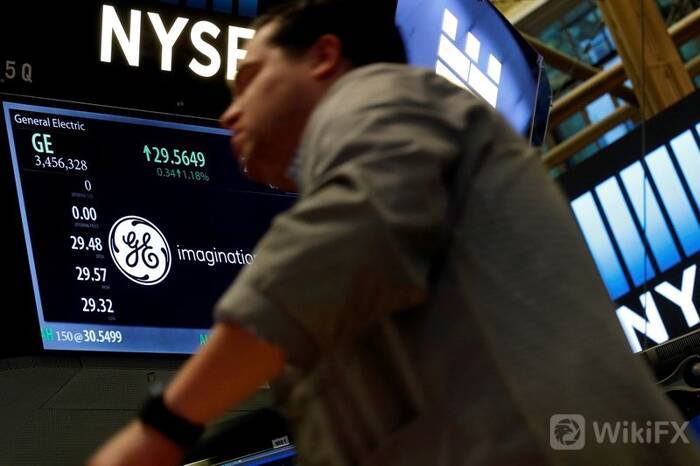If any investor tells you they are sure of what happens next in macro markets, they are likely to be fibbing.
Such is the confusion in policy and investment circles right now over the course of inflation, output, jobs, financial prices and central bank policy that the next 3-6 months is likely impossible to predict with any conviction.
Ironically, there appears to be much less uncertainty over the long-term horizon – where risk premia have traditionally been far higher because more things can go bump in the night over elongated time spans.
But it may be easier for forecasters to look beyond unprecedented pandemic-related supply bottlenecks and labour market distortions than navigate a Northern winter of still wildly skewed economic statistics and policy nervousness.
After eye-watering swings in short-term interest rates over the past couple of weeks – due in part to bum steers from the worlds top central banks – market conviction about the next few months is understandably low.
Again this week, there‘s been what ING’s Rob Carnell called a ‘cacophony’ of central bank speeches that do little clarify the big picture for “messy and directionless” markets and do much more to encourage thoughts of divergence and volatility.
Adding to the complexity, Federal Reserve chair Jerome Powell struck a dovish tone by emphasising the Fed is looking closely at labour market disparities rather than just headline numbers in assessing maximum employment.
But his colleagues still sing from very different hymn sheets. On Monday alone, Fed vice president Richard Clarida said conditions for lifting interest rates may just be in place by the end of 2022; St Louis Fed chief James Bullard agreed with markets that there will be two rate hikes by then; but Chicago Fed boss Charles Evans doesnt expect one until 2023.
That even assumes investors can judge the mood of the Fed from who‘s in the hot seats at the moment. They still don’t know if Powell will be re-appointed as chair when his term expires in February. And this weeks decision by top bank supervisor Randal Quarles to resign next month leaves at least two vacant seats on the board going into year-end.
Although faced with similar inflation and jobs conundrums, the Feds overseas peers seem on similarly fractious paths.
European Central Bank officials have pushed back against market pricing for a small ECB rate rise next year, and chief economist Philip Lane led the charge again this week in insisting higher rates next year could be counterproductive.
And yet ECB board member Isabel Schnabel said the bank cannot ignore surging house prices, while bank supervisor Andrea Enria stressed that low interest rates are hurting bank margins more than they are boosting lending volumes.
Faith in Bank of England chief Andrew Bailey‘s speechifying, meantime, was holed beneath the waterline last week after he spent a month nudging markets into thinking a UK rate rise was possible and then voted against one at last Thursday’s meeting. While still pointing to higher rates, he also insists tighter credit does nothing to solve supply-distorted inflation spikes.
A TOSS OF COIN
Returning to fundamental models of where interest rates should end up at the end of the cycle – so-called terminal rates – provides some anchor for bond and currency markets.
But even that pre-supposes this centrally-mandated global recession and bounce-back of the past 18 months is anything like any other cycle weve seen.
And for many theres simply no consensus now on how we get from here to there.
A JPMorgan survey of its clients this week asked whether markets or central banks were correct in their interest rate expectations over the coming year. The answer was split 50-50 – just like so many other questions it posed on equity or bond positioning.
And its not just a question of clarity.
Few envy the central banks conundrum. Hike too early and they risk shutting down the recovery before it matures; jump the gun on other countries and you risk a rising currency amplifying the hit; or just do nothing and risk inflation entrenching.
Mark Nash at Jupiters Fixed Income Alternatives thinks the Fed is an “unenviable position” and “has to choose between economic price stability and equity price stability.”
Compounding that dilemma are the financial stability arms of the central banks that warned once again this week that persistently easy money threatened blowing bubbles in everything from equities to crypto tokens and meme stocks.
What are investors to do? Many appear to be just staying long equity, buying inflation protected bonds and crossing fingers.
The seemingly endless sinking of inflation-protected government bond yields to records ever deeper below zero reflects just that. Inflation-linked bond yields are now below -1.1% in the United States, below -2.0% in Germany and below -3.2% in Britain.
Franklin Templetons Fixed Income CIO Sonal Desai thinks it will come down to post-pandemic labour supply in the end and how quickly returning job seekers can prevent temporary inflation spikes seeding a wage-price spiral. But she admits this could take a lot longer to assess than markets have patience for.
“For now though, investors had better prepare for sluggish labour supply, persistent inflation and rising financial volatility.”
(by Mike Dolan, Twitter: @reutersMikeD; Editing by Mark Potter)

Leave a Reply